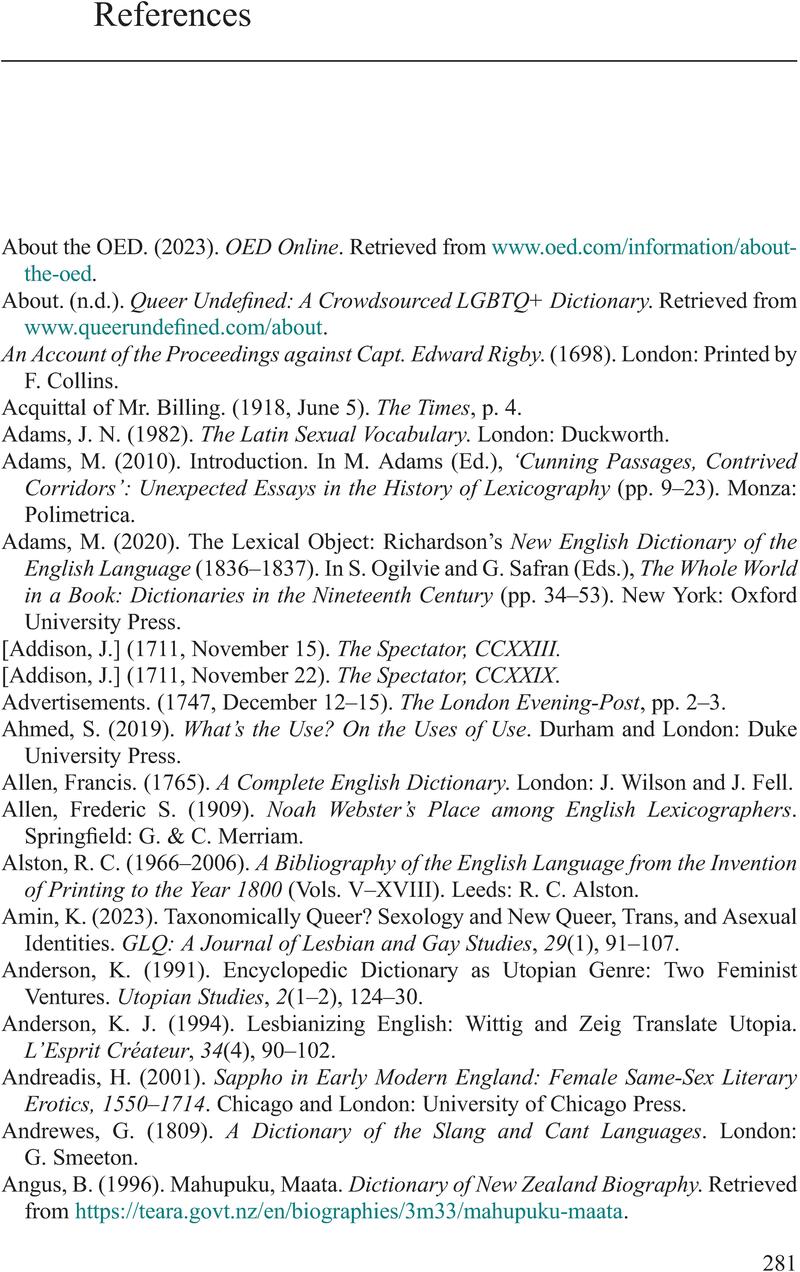Book contents
- Before the Word Was Queer
- Before the Word Was Queer
- Copyright page
- Dedication
- Epigraph
- Contents
- Figures
- Tables
- Acknowledgements
- Notes
- Abbreviations
- Introduction
- 1 Legislating Acts
- 2 Estranging English
- 3 Silencing Sex
- 4 Dissecting Matter
- 5 Taxonomizing Desire
- Conclusion
- Book part
- References
- Index
- References
References
Published online by Cambridge University Press: 14 March 2024
- Before the Word Was Queer
- Before the Word Was Queer
- Copyright page
- Dedication
- Epigraph
- Contents
- Figures
- Tables
- Acknowledgements
- Notes
- Abbreviations
- Introduction
- 1 Legislating Acts
- 2 Estranging English
- 3 Silencing Sex
- 4 Dissecting Matter
- 5 Taxonomizing Desire
- Conclusion
- Book part
- References
- Index
- References
Summary

- Type
- Chapter
- Information
- Before the Word Was QueerSexuality and the English Dictionary, 1600–1930, pp. 281 - 314Publisher: Cambridge University PressPrint publication year: 2024

